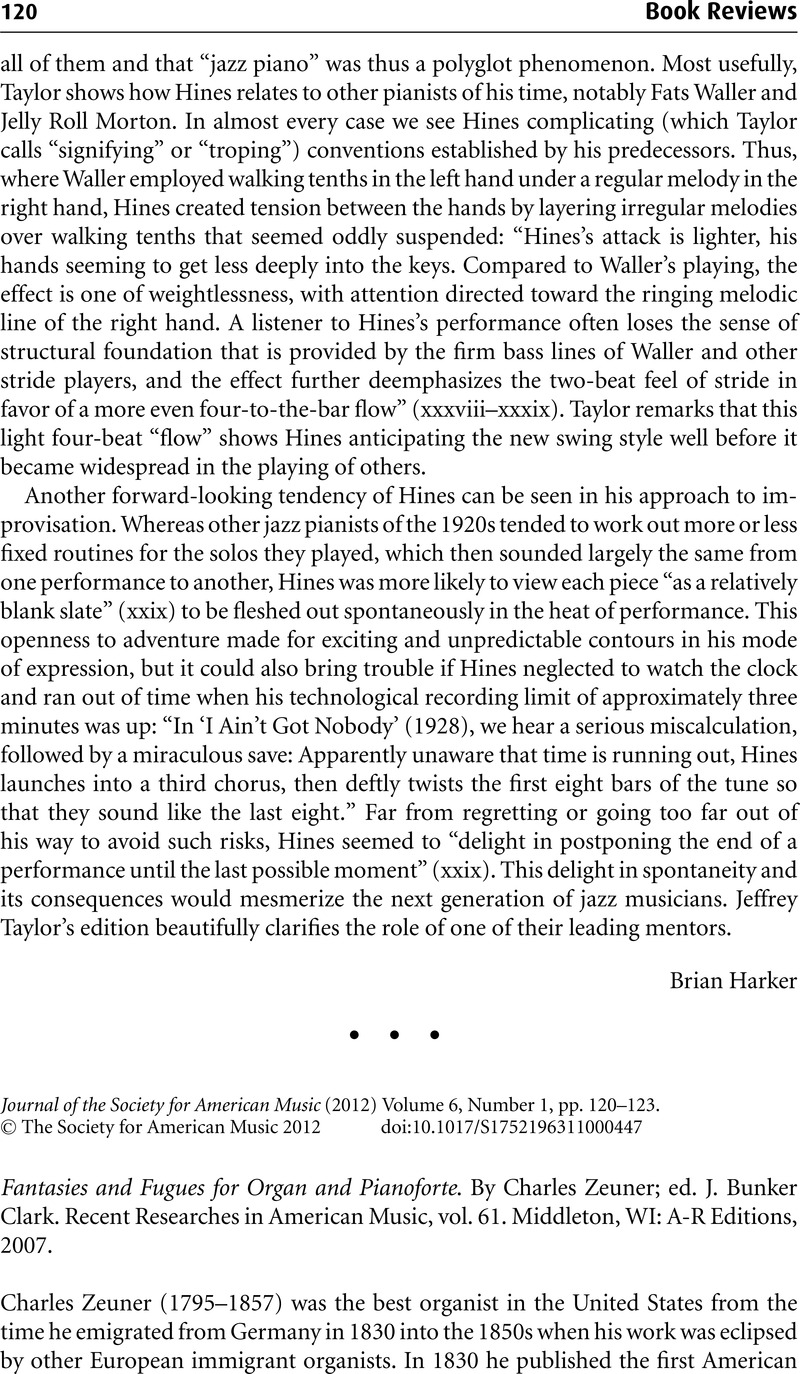No CrossRef data available.
Published online by Cambridge University Press: 20 February 2012

1 J. Bunker Clark (1931–2003), Professor of Musicology at the University of Kansas, longtime member of the Sonneck Society for American Music, and series editor for many years of Detroit Monographs in Musicology/Studies in Music and Detroit Studies in Bibliography (both published by Harmonie Park Press), laid the groundwork for studying organ and piano music in the United States before 1850. His two-volume Anthology of Early American Keyboard Music, 1787–1830 (A-R Editions, 1977) made works by the most important antebellum composers accessible and inaugurated the valuable series published by A-R Editions, Recent Researches in American Music. His article “American Organ Music before 1830: A Critical and Descriptive Survey,” The Diapason 72/11 (1981): 1–3, presented the first in-depth study of this music. Clark's, book The Dawning of American Keyboard Music (New York: Greenwood Press, 1988)Google Scholar remains the central source for information about this literature. His edited collection American Keyboard Music through 1865, Three Centuries of American Music, vol. 3 (Boston: G. K. Hall, 1990) includes facsimile editions of a very wide range of American keyboard works. Clark was posthumously honored by the publication of On Bunker's Hill: Essays in Honor of J. Bunker Clark, ed. William A. Everett and Paul R. Laird (Sterling Heights, MI: Harmonie Park Press, 2007).
2 According to Lou Carol Fix, in the Moravian church in America, “the organ was intended to support congregational hymn singing and to serve as the continuo instrument within the instrumental ensemble accompanying choral and solo singing.” “The Organ in Moravian Church Music,” in The Music of the Moravian Church in America, ed. Nola Reed Knouse (Rochester: University of Rochester Press, 2008), 159. Regarding the use of organs in the Spanish Catholic missions in seventeenth-century New Mexico, see Spiess, Lincoln B., “Church Music in Seventeenth-Century New Mexico,” New Mexico Historical Review 40/1 (January 1965): 5–21Google Scholar; Spiess, , “Instruments in the Missions of New Mexico,” in Essays in Musicology: A Birthday Offering for Willi Apel, ed. Tischler, Hans (Bloomington: School of Music, Indiana University, 1968), 131–36Google Scholar.